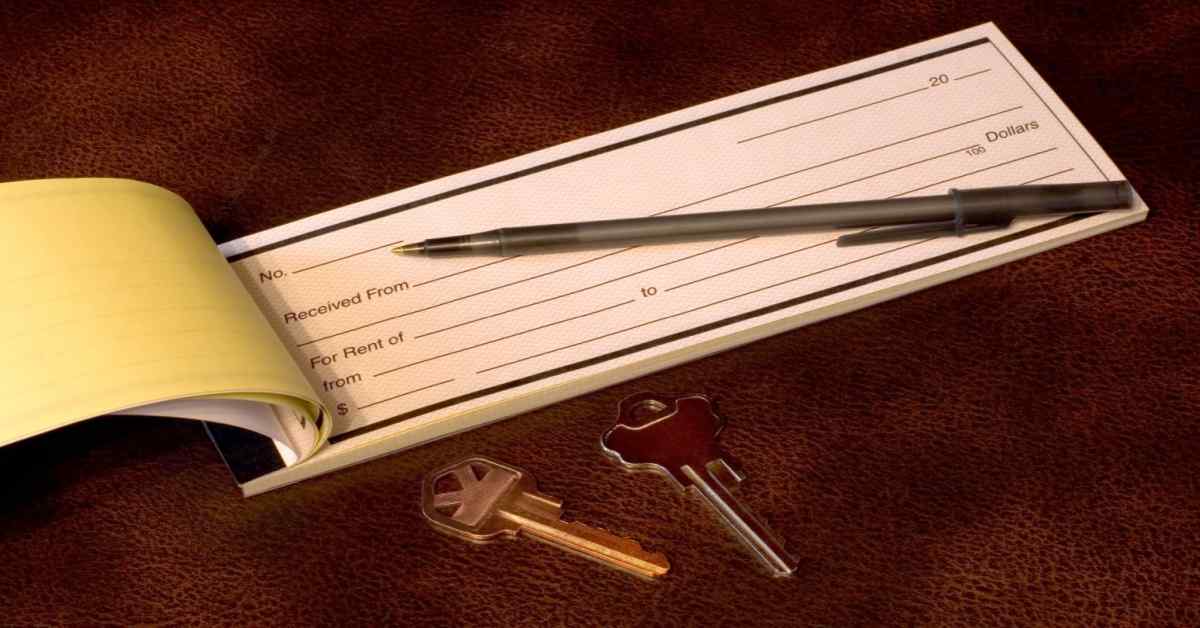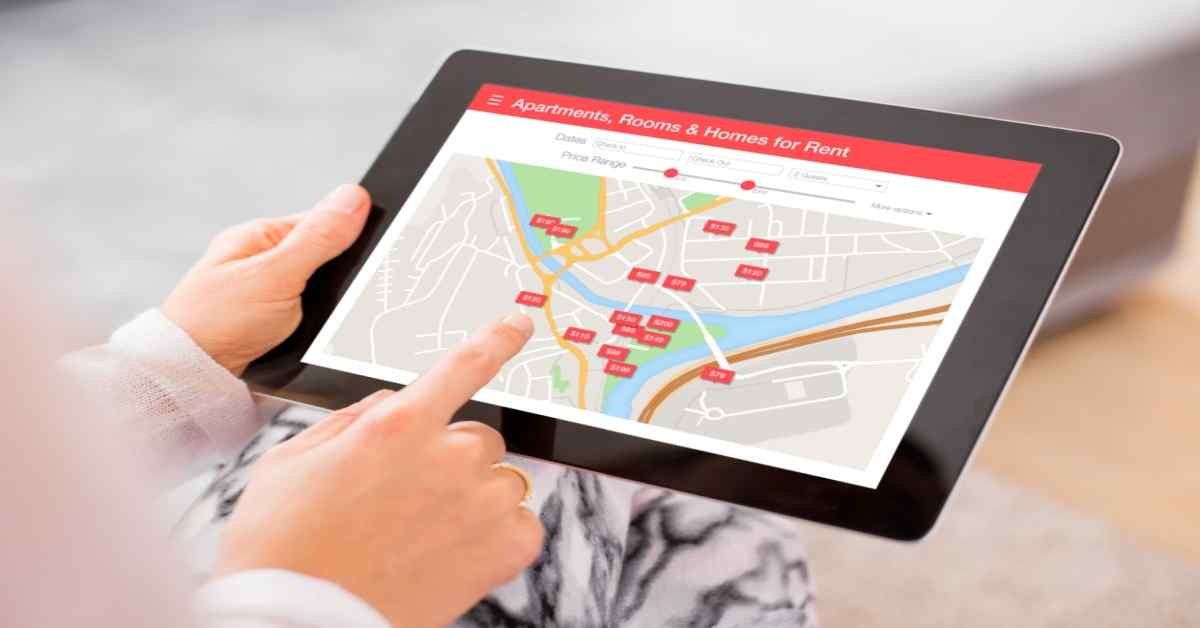Table of Contents
Quality Service Guarantee Or Painting Free

Get a rental agreement with doorstep delivery

Find the BEST deals and get unbelievable DISCOUNTS directly from builders!

5-Star rated painters, premium paints and services at the BEST PRICES!
Loved what you read? Share it with others!


Submit the Form to Unlock the Best Deals Today
Help us assist you better
Check Your Eligibility Instantly

Experience The NoBrokerHood Difference!
Set up a demo for the entire community
Rent Slip: Your Guide to Creating a Clear and Concise Document
Table of Contents
In renting, a well-crafted rent slip can be the difference between a smooth, organised transaction and a messy tangle of confusion. This essential document serves as a rent payment record, outlining key details for both landlords and tenants. Whether you're a renter ensuring you have proper documentation or a landlord looking to streamline your collection process, understanding rent slips is crucial.
What is a Rent Slip?
A rent slip is a formal document provided by a landlord to a tenant upon receiving a rent payment. It acts as a receipt, acknowledging that the tenant has fulfilled their financial obligation for a specific rental period. This official record details important information such as:
- Amount Paid: The exact amount of rent received by the landlord.
- Rental Period: The timeframe covered by the rent payment (e.g., April 1st - April 30th).
- Tenant and Landlord Details: Identification information for both parties, including names and possibly contact details.
- Date: The date the rent was received.
Components of a Rent Slip
Understanding a well-structured house rent slip format ensures clear communication and record-keeping for both landlords and tenants. A well-constructed rent slip should include several key components to ensure it functions effectively as a record of rent payment.
Quality Service Guarantee Or Painting Free

Get a rental agreement with doorstep delivery

Find the BEST deals and get unbelievable DISCOUNTS directly from builders!

5-Star rated painters, premium paints and services at the BEST PRICES!
Here are the essential elements:
- Heading: This identifies the document as a "Rent Slip" or "Rent Receipt."
- Date: The date the rent payment is received by the landlord.
- Tenant Information: The full name of the tenant paying the rent.
- Landlord Information: The full name of the landlord receiving the rent, and potentially their contact information (optional).
- Property Address: The specific address of the rented property.
- Rent Amount: The exact amount of rent paid by the tenant.
- Rental Period: The timeframe covered by the rent payment (e.g., month, week).
- Payment Method: How the rent was paid (cash, check, online transfer, etc.). This might not be necessary for all situations.
- Signatures: Ideally, both the landlord and tenant should sign the rent slip to acknowledge receipt of payment.
Purpose of a Rent Slip
A home rent slip serves several important purposes for both landlords and tenants in a rental agreement. Here's a breakdown of its key benefits:
For Tenants:
- Proof of Payment: The house rent slip acts as a crucial legal document demonstrating that the tenant has fulfilled their rent obligation for a specific period. This can be helpful in case of disputes or eviction proceedings.
- Record Keeping: Tenants can maintain rent slips as a record of their rental payments, aiding in budgeting and tax purposes (especially when claiming rent deductions).
- Transparency: A clear rent slip ensures tenants understand the breakdown of their rent payment, including the covered period and amount.
For Landlords:
- Organised Records: Rent slips provide landlords with a documented history of rent payments, simplifying bookkeeping and financial tracking.
- Reduced Disputes: A clear and detailed rent slip minimises the chances of confusion or disagreements regarding rent payments.
- Legal Protection: In case of legal issues, a signed rent slip serves as evidence of rent collection and strengthens the landlord's position.
Why Rent Slips Matter for Tenants
Here are the key reasons why rent slips matter for tenants:
A. Proof of payment: This is the most crucial reason. A rent slip acts as a legal document demonstrating you've paid your rent for a specific period. It can be vital evidence in case of disagreements or eviction proceedings. Keeping a record of your rent payments with a rent slip for HRA purposes can simplify tax filing and ensure you have proper documentation to claim your House Rent Allowance.
B. Record keeping for budgeting and taxes: Rent slips help you maintain a record of your rental expenses. This can be helpful for budgeting purposes and potentially for tax deductions (especially if you're claiming rent deductions). For salaried individuals claiming House Rent Allowance (HRA), a well-maintained rent slip for tax purposes serves as crucial evidence of rent paid throughout the year.
C. Protection against disputes with landlords: A clear rent slip ensures there's no confusion about your rent payments. It can protect you if a landlord mistakenly claims you haven't paid rent or withholds your security deposit due to a misunderstanding.
Why Rent Slips Matter for Landlords
Here are the key reasons why rent slips matter for landlords:
A. Documentation for income and taxes: Rent slips provide landlords with a documented history of rent payments. This simplifies bookkeeping and ensures accurate records of rental income, which is crucial for tax filing and financial audits.
B. Verification of rent payments: A clear rent slip acts as a record that the tenant has fulfilled their financial obligation. This minimises confusion and helps avoid disagreements about whether rent has been paid.
C. Legal protection in case of disputes with tenants: In situations like late payment or non-payment, a signed rent slip serves as evidence to support the landlord's claims in court. It strengthens the landlord's position during eviction proceedings or disputes regarding security deposits.
Types of Rent Slips
There are indeed different types of rent slips to consider:
A. Traditional paper rent slips: These are the classic handwritten or printed receipts provided by landlords upon receiving rent in cash or check. While traditional methods work, utilising a rent slip generator can save time and streamline the process for both landlords and tenants.
B. Electronic rent slips: With the rise of online payments, many landlords and property management companies now offer electronic rent slips. These can be generated and emailed to tenants after a successful online payment.
C. Customised rent slip templates: Both landlords and tenants can utilise pre-designed rent slip templates available online or through property management software. These templates can be customised with specific details and logos for a professional look.
How to Create a Rent Slip
A. Step-By-Step Guide for Tenants
While tenants typically wouldn't be responsible for creating rent slips, they can certainly request one from their landlord as proof of payment. Here's how a tenant can ensure they receive a proper rent slip:
- Request a Rent Slip: Inform your landlord that you'd like a rent slip after each payment. This establishes clear communication and ensures you receive the necessary documentation.
- Specify the Details: If the landlord doesn't have a pre-designed template, you can provide them with the information that should be included on the rent slip, such as:
- Your Name
- Landlord's Name (and contact information, if desired)
- Property Address
- Date of Payment
- Rent Amount
- Rental Period Covered
- Payment Method
- Review the Slip: Once you receive the rent slip, carefully review the details to ensure they are accurate. If there are any discrepancies, politely point them out to your landlord for correction.
- Maintain Copies: In today's digital age, many landlords and property management companies offer the convenience of generating and sending rent slips online directly to tenants after a successful online payment. Keep a copy of each rent slip for your records. You can scan paper slips or save electronic versions for easy access.
B. Step-By-Step Guide for Landlords
Having a clear and efficient system for creating rent slips can save you time and streamline your rental operations. Here's a step-by-step guide for landlords:
1. Choose Your Format:
- Paper Rent Slips: This traditional method works well for smaller rental portfolios or tenants who prefer physical receipts. You can design and print your slips or purchase pre-printed templates from office supply stores.
- Electronic Rent Slips: If you utilise online rent payments, consider offering electronic rent slips. Many online payment platforms generate automatic receipts you can email to tenants.
- Software-Generated Slips: Property management software often offers built-in features for creating and managing rent slips. These can automatically populate tenant and property information, saving you time and effort.
2. Include Essential Details:
Regardless of the format, your rent slip should include the following key information:
- Heading: Clearly state "Rent Slip" or "Rent Receipt".
- Date: The date the rent payment is received.
- Tenant Information: Full name of the tenant paying rent.
- Landlord Information: Your full name (and contact information, if desired).
- Property Address: The specific address of the rented property.
- Rent Amount: The exact amount of rent received.
- Rental Period: The timeframe covered by the rent payment (e.g., month, week).
3. Consider Additional Information (Optional):
- Payment Method: How the rent was paid (cash, check, online transfer, etc.).
- Signatures: A signature line for both you and the tenant (though not always necessary).
- Late Fee Policy: (optional) A brief mention of your late fee policy.
- Breakdown of Rent: (optional) For complex rent structures, you might include a breakdown of base rent, utilities, or parking fees.
4. Maintain Copies:
Always keep a copy of each issued rent slip for your records. You can store paper copies in a designated folder or scan them for digital storage.
5. Utilise Templates:
Save time by creating a reusable template for your rent slips. This can be a simple Word document or a pre-designed template from your chosen software.
Legal Considerations Regarding Rent Slips
Here are the important legal considerations regarding rent slips:
A. Legal requirements for rent slips: While not universally mandated by law, rent slips hold significant weight in many jurisdictions. However, specific requirements for rent slips can vary depending on your location. In some areas, there might be regulations regarding the information they must contain.
B. Admissibility in court: A well-crafted rent slip serves as a primary piece of evidence in court for both landlords and tenants in disputes related to rent payments. The court will consider the rent slip alongside other factors like bank statements or witness testimonies.
C. Importance of accuracy and completeness: To be most effective in legal situations, rent slips must be accurate and complete. They should include all essential details like date, tenant information, amount paid, and covered rental period.
Get your Rent Sip Issued Through NoBroker
Rent slips are a simple yet powerful tool that can significantly benefit both landlords and tenants. By providing a clear record of rent payments, they promote transparency, minimise confusion, and offer valuable protection in case of legal disputes. Maintaining accurate and well-documented rent slips is a wise practice for a smooth and harmonious rental experience.
Still, confused about rent payments? With NoBroker Pay you can simplify the payment process. Pay your rent using credit cards through NoBroker and earn reward points. Visit NoBroker Pay today to experience a hassle-free way to manage your bill payments.
You can also get your rent slips through NoBroker. One of the most convenient and easiest ways to get a rental slip online in India, use NoBroker to make and keep track of your rental payments. Download the app today!
Frequently Asked Questions
Ans: Rent slips are important for both tenants and landlords. Tenants can use them as proof of on-time rent payments, which can be helpful when applying for a new apartment or claiming tax benefits like House Rent Allowance (HRA). Landlords use them for record-keeping and tax purposes.
Ans: There are many resources available online that provide room rent slip formats. You can also create your format as long as it includes the essential information mentioned above.
Ans: A typical rent slip should include the landlord's name and contact information, the tenant's name and contact information, the property address, the date of payment, the rent amount paid, and the rent period covered by the payment.
Ans: No, not always. In today's digital age, many landlords and property management companies provide electronic rent receipts. These can be emailed or accessed through an online portal. However, it's always a good idea to save a copy of the receipt, whether physical or digital.
Ans: It's recommended to keep rent slips for at least one year after the lease ends. This can be helpful in case of disputes with your landlord or for tax purposes. Some tenants prefer to keep them for longer, especially if they are concerned about security deposits or other agreements.
Loved what you read? Share it with others!
Most Viewed Articles

Top 10 Best app for House Renting Near you
December 30, 2024
16896+ views

Magenta Line Delhi Metro: Route, Timing, Ticket Fare , Fact & Stations 2025
June 5, 2024
11360+ views

Rent Slip: Your Guide to Creating a Clear and Concise Document
May 16, 2024
6686+ views

NoBroker Paid Services Reviews
December 31, 2024
6625+ views

Top Paying Guest Apps in 2025: Level Up Your PG Search
April 10, 2024
6357+ views
Recent blogs in
NoBroker Paid Services Reviews
December 31, 2024 by NoBroker.com
Top 10 Best app for House Renting Near you
December 30, 2024 by Vivek Mishra
10 Best Property Inspection Apps in Indian in 2025
October 14, 2024 by Priyanka Saha
Magenta Line Delhi Metro: Route, Timing, Ticket Fare , Fact & Stations 2025
June 5, 2024 by Priyanka Saha
Top 10 Best Society Management Apps in India 2025
June 4, 2024 by Prakhar Sushant




Join the conversation!